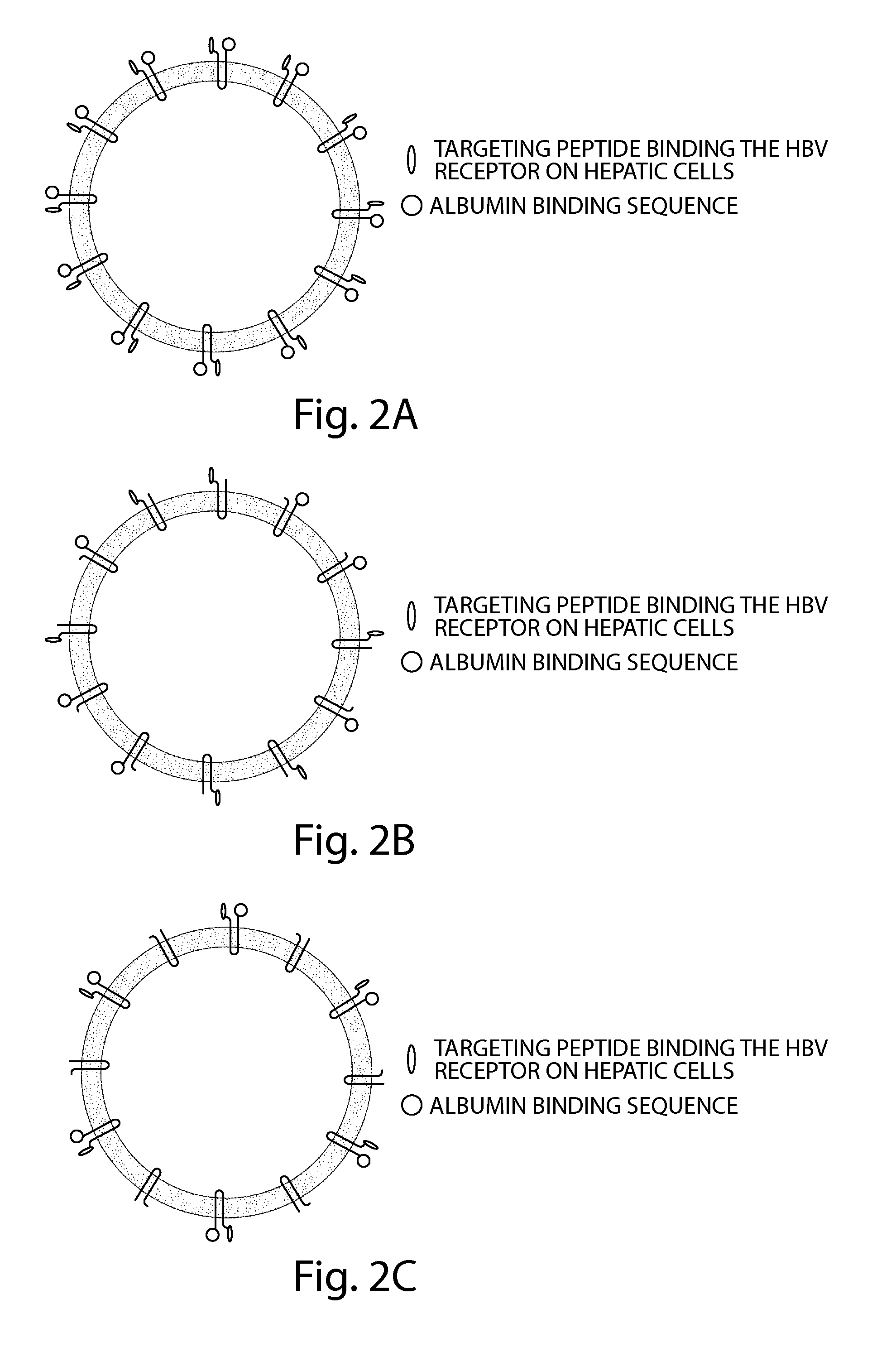Hollow nanoparticles and uses thereof
a nanoparticle and nanoparticle technology, applied in the field of particles, can solve the problems of specific organ toxicities, unsatisfactory chemotherapeutic agents, and inability to meet the needs of patients, and achieve the effects of rapid metabolization, reduced density, and high loading dos
- Summary
- Abstract
- Description
- Claims
- Application Information
AI Technical Summary
Benefits of technology
Problems solved by technology
Method used
Image
Examples
example 1
Codon Optimization of Genes for Enhanced Human and Yeast Expression
[0232]Codon optimization of genes for enhanced expression of the proteins of this invention in human cells was performed by assembling synthetic sequences containing codons chosen among those preferred by highly expressed human genes, following algorithms described previously (Cid-Arregui et al J. Virol. 77:4928-4937, 2003), as it was done for the complete HBsAg sequence (Genbank accession number AY515140). For optimization of codons for enhanced expression in yeast, an algorithm was elaborated on the basis of the relative synonymous codon usage found in highly expressed genes from yeast as described by Sharp et al. Nucl. Acids Res. 14: 5125-5143 (1986). The sequences encoding the different parts of the fusion genes were assembled in frame and verified by sequencing. The superior expression driven by the synthetic genes was demonstrated by transfection experiments in which wild type and codon-optimized genes were com...
example 2
Expression and Purification of HBsAg Particles in Recombinant Yeast
[0233](1) The recombinant yeast (Saccharomyces cerevisiae YPH 499 strain) transformed with pESC-URA (Stratagene) carrying codon-optimized fusion genes (SEQ ID No. 22, 24, 26, 28, 30, 32, 34, 36, 38) were cultivated following manufacturer's recommendations.
[0234](2) From the recombinant yeast in the stationary growth phase (after about 72 hours), whole cell extracts were prepared using Yeast Protein Extraction Reagent (Pierce Chemical Co.), then separated by sodium dodecylsulfate-polyacrylamide gel electrophoresis (SDS-PAGE), and subjected to silver staining to identify HBsAg in the sample.
[0235](3) The recombinant yeast (wet weight: 26 g) cultivated on the synthetic medium 8S5N-P400 was suspended in 100 ml of Buffer Solution A (7.5 M urea, 0.1 M sodium phosphate, pH 7.2, 15 mM EDTA, 2 mM PMSF, 0.1% Tween 80) and homogenized in a BEAD-BEATER (BioSpec Products, Inc.) using 0.5 mm glass beads. Then, the supernatant was ...
example 3
Preparation of Nanoparticles Displaying a Hepatocyte Targeting Moiety (Hep-Nanoparticles)
[0240]Hep nanoparticles like those listed in Table 1 (SEQ ID No. 3-11) contain a Pre-S1-derived sequence that has been shown to bind a cell membrane receptor on hepatic cells and to facilitate hepatitis B virus internalization (De Falco et al. J. Biol. Chem. 276:36613-36623, 2001). Codon-optimized genes encoding these fusion proteins (SEQ ID No. 22, 24, 26, 28, 30, 32, 34, 36, 38) were cloned under control of the PAOX1 promoter, which is induced by methanol, in the polylinker of the plasmid pPICZA (Invitrogen) in frame with a HIS-tag and used form transformation of the yeast Pichia pastoris using the EASYSELECT Pichia expression kit (Invitrogen) following manufacturer's instructions. Yeast cells were transformed by electroporation as follows: Pichia pastoris X-33 was grown in 5 ml YPD medium overnight at 30° C. 0.1-0.5 ml of the overnight culture were used to inoculate 500 ml of fresh medium in ...
PUM
| Property | Measurement | Unit |
|---|---|---|
| Size | aaaaa | aaaaa |
| Size | aaaaa | aaaaa |
| Fraction | aaaaa | aaaaa |
Abstract
Description
Claims
Application Information
 Login to View More
Login to View More - R&D
- Intellectual Property
- Life Sciences
- Materials
- Tech Scout
- Unparalleled Data Quality
- Higher Quality Content
- 60% Fewer Hallucinations
Browse by: Latest US Patents, China's latest patents, Technical Efficacy Thesaurus, Application Domain, Technology Topic, Popular Technical Reports.
© 2025 PatSnap. All rights reserved.Legal|Privacy policy|Modern Slavery Act Transparency Statement|Sitemap|About US| Contact US: help@patsnap.com



